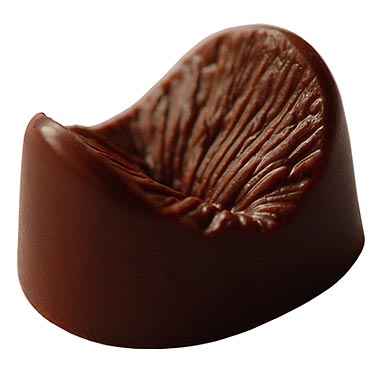gross

Eating people is wrong. But why? People of different sorts, at different times, expressing their views in different idioms, have had different answers to that question. Right now, our culture isn’t obsessed with cannibalism, though we are still unwholesomely fascinated enough to buy books and go to movies about anthropophagy among the Uruguayan rugby team that ran out of food after their plane crashed in the Andes. (…)
Our modern idioms for disapproving of cannibalism are limited. There is a physical disgust at the very idea of eating human flesh, though it’s not clear that this is necessarily different from the revulsion felt by some people confronted with haggis, calf brains, monkfish liver, or sheep eyes, the rejection of which rarely requires, or receives, much of an explanation. It is widely thought that cannibalism is in itself a crime, but in most jurisdictions it isn’t. (It is criminal to abuse a corpse, so eating dead human flesh tends to be swept up under statutes mainly intended to prevent trading in human body parts or mutilating cadavers.)
{ LA Review of Books | Continue reading }
artwork { Keith Haring }
flashback, food, drinks, restaurants, gross | March 12th, 2012 2:00 pm

In 1986, Guantanamo became host to the first and only McDonald’s restaurant within Cuba.
A Subway sandwich shop was opened in November 2002. Other fast food outlets have followed. These fast food restaurants are on base, and not accessible to Cubans.
It has been reported that prisoners cooperating with interrogations have been rewarded with Happy Meals from the McDonald’s located on the mainside of the base.
In 2004, Guantanamo opened a combined KFC & A&W restaurant at the bowling alley and a Pizza Hut Express at the Windjammer Restaurant. There is also a Taco Bell, and the Triple C shop that sells Starbucks coffee and Breyers ice cream.
All the restaurants on the installation are franchises owned and operated by the Department of the Navy. All proceeds from these restaurants are used to support morale, welfare and recreation (MWR) activities for service personnel and their families.
{ Wikipedia | Continue reading }
U.S., economics, food, drinks, restaurants, gross | February 20th, 2012 3:00 pm

Microwave Massacre is a 1983 dark comedy/horror film directed by Wayne Berwick. (…)
After coming home drunk one night and getting into an argument with his wife May, Donald loses his temper and bludgeons her to death with a large pepper grinder. He wakes up the next day with a bad hangover, no memory of the night before, and a growling stomach. He discovers May’s corpse in the microwave and after the initial wave of horror passes, he starts to take it in stride, telling his co-workers that he and May separated. After work, he cuts up May’s body and stores it in foil wrap in the fridge.
Looking for a midnight snack one night, Donald unintentionally takes a few bites of May’s hand, and after the initial wave of horror passes, he realizes it’s the best thing he’s ever eaten. He even brings some to work with him and shares it with Phillip and Roosevelt, who concur. He soon starts picking up hookers and using them for meat in his recipes. (…)
Donald’s lunches continue to be a hit with his friends, and he decides to cater an outing to a wrestling match with a new recipe he calls “Peking chick.” When Roosevelt and Phillip show up to pick up Donald, they discover him dead on the floor of a heart attack, and some body parts in the microwave. They leave in horror and disgust, realizing what Donald had been serving them.
{ Wikipedia | Continue reading }
photo { Glenn Glasser }
food, drinks, restaurants, gross, haha, photogs, showbiz, weirdos | January 26th, 2012 2:27 pm

{ This is a GoogleMaps picture of a farm near Goldsboro in North Carolina. The two salami-colored ponds on either side are lagoons, but not the kind where you want to swim. They’re open basins full of feces. Livestock agriculture in the US produces manure on a truly titanic scale — some ~133 million tons’ dry weight per year, ~13 times more than the sanitary waste produced by the human population. | Puff the Mutant Dragon | full story }
gross, science | January 12th, 2012 10:58 am

Public restrooms are a great place to find bacteria, as the authors of the new study euphemistically put it, “because of the activities that take place there and the high frequency of use by individuals with different hygienic routines.” Furthermore, different neighborhoods within bathrooms probably house different communities of bacteria. To perform a census on these hidden but lively communities, researchers sampled surfaces in six men’s rooms and six women’s rooms at the University of Colorado, Boulder. Genetic sequencing of these samples told them which species of bacteria were present. Out of all the bacterial types that turned up, there were 19 phyla of bacteria present in every bathroom.
{ inkfish | Continue reading }
illustration { Wendy MacNaughton, Meanwhile, The San Francisco Public Library }
gross, science | November 26th, 2011 3:35 am

Simply speaking, disgust is the response we have to things we find repulsive. Some of the things that trigger disgust are innate, like the smell of sewage on a hot summer day. No one has to teach you to feel disgusted by garbage, you just are. Other things that are automatically disgusting are rotting food and visible cues of infection or illness. We have this base layer of core disgusting things, and a lot of them don’t seem like they’re learned.
But there’s also a whole set of things that have a lot of cultural and individual variation about whether it’s considered disgusting. For example, I like bloody steaks and my girlfriend, who is a vegetarian, finds them repulsive. The core base of what causes disgust has expanded to the point where certain kinds of moral violations, social transgressions, and even value systems of groups one is not a member of can come to be disgusting as well.
There’s a good case to be made that the culture we grow up in can fine-tune our disgust response or calibrate what we come to be disgusted by, but people don’t really need to learn how to be disgusted. The reaction is specified by nature, although it doesn’t start until we are around 3 or 4 years old.
{ Daniel Kelly/Salon | Continue reading }
gross, psychology, science | July 28th, 2011 6:50 pm

Just across the river from Detroit, Lakeshore is where barrels of Canadian Club whiskey age in blocky, windowless warehouses. Scott, who had recently completed his PhD in mycology at the University of Toronto, had launched a business called Sporometrics. Run out of his apartment, it was a sort of consulting detective agency for companies that needed help dealing with weird fungal infestations. The first call he got after putting up his website was from a director of research at Hiram Walker Distillery named David Doyle.
Doyle had a problem. In the neighborhood surrounding his Lakeshore warehouses, homeowners were complaining about a mysterious black mold coating their houses. And the residents, following their noses, blamed the whiskey. Doyle wanted to know what the mold was and whether it was the company’s fault. Scott headed up to Lakeshore to take a look.
When he arrived at the warehouse, the first thing he noticed (after “the beautiful, sweet, mellow smell of aging Canadian whiskey,” he says) was the black stuff. It was everywhere—on the walls of buildings, on chain-link fences, on metal street signs, as if a battalion of Dickensian chimney sweeps had careened through town. “In the back of the property, there was an old stainless steel fermenter tank,” Scott says. “It was lying on its side, and it had this fungus growing all over it. Stainless steel!” The whole point of stainless steel is that things don’t grow on it.
Standing at a black-stained fence, Doyle explained that the distillery had been trying to solve the mystery for more than a decade. Mycologists at the University of Windsor were stumped. A team from the Scotch Whisky Association’s Research Institute had taken samples and concluded it was just a thick layer of normal environmental fungi: Aspergillus, Exophiala, stuff like that. Ubiquitous and—maybe most important—in no way the distillery’s fault.
Scott shook his head. “David,” he said, “that’s not what it is. It’s something completely different.”
Leave fruit juice on its own for a few days or weeks and yeast—a type of fungus—will appear as if by magic. In one of nature’s great miracles, yeast eats sugar and excretes carbon dioxide and ethanol, the chemical that makes booze boozy. That’s fermentation.
If fermentation is a miracle of nature, then distillation is a miracle of science. Heat a fermented liquid and the lighter, more volatile chemical components—alcohols, ketones, esters, and so on—evaporate and separate from the heavier ones (like water). That vapor, cooled and condensed into a liquid, is a spirit. Do it to wine, you get brandy; beer, you get whiskey. Distill anything enough times and you get vodka. When it’s executed right, the process concentrates a remarkable array of aromatic and flavorful chemicals.
{ Wired | Continue reading }
food, drinks, restaurants, gross, science | June 9th, 2011 11:00 pm

Almost every country in the EU last week approved the use of Meat Glue in food. Technically called thrombian, or transglutaminase (TG), it is an enzyme that food processors use to hold different kinds of meat together.
Imitation crab meat is one of the more common applications: it’s made from surimi, a “fish-based food product” made by pulverizing white fish like pollock or hake into a paste, which is then mixed with meat glue so that the shreds stick together and hold the shape wanted for it by its creator.
Chicken nuggets are also often bound with meat glue, as are meat mixtures meant to mold like sausage but without the casing. Meat glue is also used by high-end chefs like New York restaurant WD-50’s Wylie Dufresne, who is famous for his shrimp pasta dish—instead of shrimp with pasta, he just makes the pasta out of shrimp.
{ Discovery | Continue reading }
economics, food, drinks, restaurants, gross | May 2nd, 2011 6:54 pm
gross, photogs | March 7th, 2011 6:40 pm

Jay Traver had begun to notice an uncomfortable crawling sensation under her skin. Scalp spots had bothered her for years but despite her best efforts – she was, after all, a renowned professor of zoology – she couldn’t identify the parasites.
Over the seasons the bugs had spread across her body and eventually invaded her eyes, ears and nostrils, raising her discomfort to fever pitch. Doctors seemed mystified but by the summer of 1950 she had made a breakthrough.
Strong caustic soaps seemed to help control the infestation and she had dug some of the bugs out of her skin with her nails to identify them as dermatophagoides – a mite never previously known to infect humans.
{ Mind Hacks | Continue reading }
photo { Süleyman Gezgin }
flashback, gross, health | March 1st, 2011 8:08 pm

It’s a gig actors call “corpse duty,” and in a shrinking market for jobs in scripted TV, dead-body roles are on the rise.
In the past few years, TV dramas have responded to feature-film trends and HDTV, which shows everything in more realistic detail, by upping the violence and delivering more shock value on the autopsy table.
The Screen Actors Guild doesn’t keep figures on corpse roles, but currently, seven of the top 10 most-watched TV dramas use corpse actors, including CBS’s “CSI,” “NCIS” and spinoff “NCIS: Los Angeles.” The new ABC series “Body of Proof” revolve1s around a brilliant neurosurgeon turned medical examiner who solves murders by analyzing cadavers.
It all means more work for extras, casting agents and makeup artists who supply corpses in various stages of decomposition.
{ WSJ | Continue reading }
photo { Christopher Payne, Autopsy theater of St. Elizabeth’s Hospital in Washington DC }
economics, gross, showbiz | February 10th, 2011 4:25 pm

Normally when I interview someone, I give them a business card and maybe the latest issue of New Scientist. Today, I give Tao a bottle of my own pee.
Chemist Tao doesn’t find this odd. Urine, he believes, could help solve the world’s energy problems, powering farms and even office buildings. And he has agreed to use my offering to show me how.
Urine might not pack the punch of rocket fuel, but what it lacks in energy density it makes up for in sheer quantity. It is one of the most abundant waste materials on Earth, with nearly seven billion people producing roughly 10 billion litres of it every day. Add animals into the mix and this quantity is multiplied several times over.
As things stand, this flood of waste poses a problem. Let it run into the water system and it would wipe out entire ecosystems; yet scrubbing it out of waste water costs money and energy. In the US, for instance, waste water treatment plants consume 1.5 per cent of all the electricity the country generates. So wouldn’t it be nice if, instead of being a vast energy consumer, urine could be put to use. (…)
To show me the process in action, Tao and Lan add my urine to the fuel cell. As it flows into the cell, a screen shows the output voltage rising to about 0.6 volts. While this prototype is too small to power a light bulb – its output is about half that of an AA battery – scaling up the cell and connecting several cells together should produce practical amounts of power.
{ NewScientist/Gizmodo | Continue reading }
artwork { Andy Warhol, Oxidation Painting, 1978 | copper metallic pigment and urine on canvas | Read: Andy Warhol’s Piss Paintings }
future, gross, science, technology | November 20th, 2010 2:44 pm
asia, gross, haha, video, weirdos | November 4th, 2010 2:22 pm
animals, gross, haha, zoophilia | October 18th, 2010 1:45 pm

Where does moral law come from? What lies behind our sense of right and wrong? For millennia, there have been two available answers. To the devoutly religious, morality is the word of God, handed down to holy men in groves or on mountaintops. To moral philosophers like Kant, it is a set of rules to be worked out by reason, chin on fist like Rodin’s thinker.
But what if neither is correct? What if our moral judgments are driven instead by more visceral human considerations? And what if one of those is not divine commandment or inductive reasoning, but simply whether a situation, in some small way, makes us feel like throwing up?
This is the argument that some behavioral scientists have begun to make: That a significant slice of morality can be explained by our innate feelings of disgust. A growing number of provocative and clever studies appear to show that disgust has the power to shape our moral judgments. Research has shown that people who are more easily disgusted by bugs are more likely to see gay marriage and abortion as wrong. Putting people in a foul-smelling room makes them stricter judges of a controversial film or of a person who doesn’t return a lost wallet. Washing their hands makes people feel less guilty about their own moral transgressions, and hypnotically priming them to feel disgust reliably induces them to see wrongdoing in utterly innocuous stories.
Today, psychologists and philosophers are piecing these findings together into a theory of disgust’s moral role and the evolutionary forces that determined it: Just as our teeth and tongue first evolved to process food, then were enlisted for complex communication, disgust first arose as an emotional response to ensure that our ancestors steered clear of rancid meat and contagion. But over time, that response was co-opted by the social brain to help police the boundaries of acceptable behavior. Today, some psychologists argue, we recoil at the wrong just as we do at the rancid, and when someone says that a politician’s chronic dishonesty makes her sick, she is feeling the same revulsion she might get from a brimming plate of cockroaches.
{ Boston Globe | Continue reading }
gross, ideas, psychology | August 23rd, 2010 11:10 am

Seppuku (”stomach-cutting”) is a form of Japanese ritual suicide by disembowelment. Seppuku was originally reserved only for samurai. Part of the samurai honor code, seppuku was used voluntarily by samurai to die with honor rather than fall into the hands of their enemies, as a form of capital punishment for samurai who have committed serious offenses, or performed for other reasons that have brought shame to them.
The ceremonial disembowelment, which is usually part of a more elaborate ritual and performed in front of spectators, consists of plunging a short blade, traditionally a tantō, into the abdomen and moving the blade from left to right in a slicing motion. (…)
Women have their own ritual suicide, jigai.
{ Wikipedia | Continue reading }
Police searched Wednesday for a porn actor suspected of killing one colleague and injuring two others with a sword that was used as a movie prop at a production studio where the suspect had been living. (…)
“There was no indication that things were going to get violent, there was nothing that provoked this attack, but at some point Steven chose to arm himself with what can be best described as a sword,” Price said. “He then used that sword against those three victims.”
{ AP/Huffington Post | Continue reading | via Craig }
gross, horror, porn | June 3rd, 2010 8:16 am
gross, haha | May 25th, 2010 10:25 pm

As Mr. Tahiri spoke, an Afghan soldier appeared carrying a large red trash bag. It was, he said, filled with human brains. “What do you want me to do with this,” he asked. “Do you want me to bury it, or do you want to take it?”
{ NY Times | Continue reading }
brain, gross, horror | May 18th, 2010 8:32 am





















